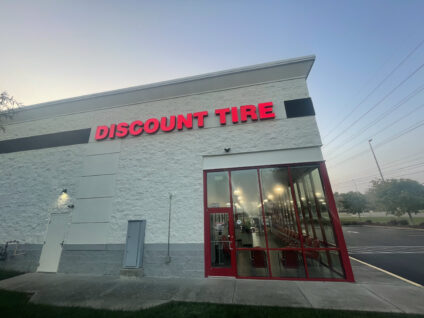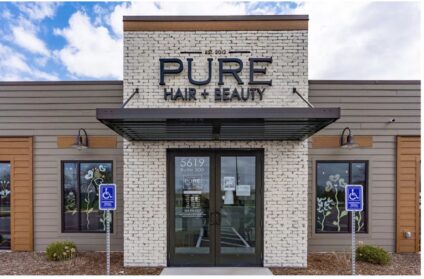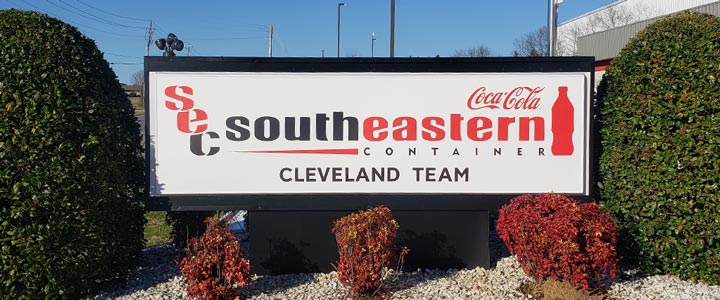In the past we’ve demonstrated how to determine the return on investment (ROI) of your signage, and now we’re discussing how the ROI of on-premise signage compares to other mediums of branding and promotion. The Signage Foundation, Inc., a research organization that delves into the numbers behind signage through studies and other methods of data collection, set out to determine the ROI of on-premise signage. We’ll be utilizing that crucial data on signage that they have uncovered through various studies.
Are Signs Effective Tools for Driving Sales?
According to TSF’s research data, “Signs were shown to be an important method of communicating goods and services to potential customers, and of driving sales results.” TSF goes further and says from their research they have found, “Depending on the type of sign addition or modification, we found that a new building sign, a new pole, or a freestanding, multi-tenant sign tends to add 5 percent to 15 percent to a site’s sales revenues. In addition, even small directional signs, intended only to help the store-bound shopper find the site, tend to add around 10 percent to a site’s revenues.”
Do New Signs, Sign Modifcations, or Sign Refreshes Help with ROI

We’ve discussed this previously as well, but indeed TSF’s research does show that “Sign changes, such as the addition of signs or improvement in design, were shown to further enhance sales.” In TSF’s research, they encountered a study of a fast-food chain in Southern California that investigated cross-sectional data from 162 fast-food restaurants in and around a major city in southern California. The study used three models to test the marketing variables to determine the effectiveness of the on-premise signage. Ultimately the study “found that the number of signs at a particular site have a significant positive impact on both the annual sales revenue and the number of annual customer transactions.” The TSF goes on to say that according to the study “for each additional sign installed at a site, annual sales dollars are expected to increase by 4.75 percent. For a typical store with annual sales revenues of $500,000, this translates to a $23,750 increase per additional sign.”
How Do Municipal Sign Codes and Regulations Effect ROI
Signage Codes and Ordinances are often developed by communities to maintain a standard look or feel for a community, city, or business district. The TSF recognizes in their work the need for sign codes; however, they also emphasize that increasingly strict sign regulations may hamper business and thus impact the tax base the communities rely on. In their words, “. Sign code officials might place onerous restrictions on signs in an attempt to create “ideal” community aesthetics. Restrictions that impede businesses can have the opposite effect, leading to a difficult business environment. A robust business community provides the tax base that leads to better roads, schools, and parks. ”
How Does Signage ROI Compare to Television, Billboards, and Print?
Signage is one of the most essential tools for a company to announce their presence and establisht their brand, but it’s not the only tool. Instead its part of a cadre of ways businesses can try to spread bread awareness, bring in customers, and hopefully drive-up sales. Here we discuss how signage ROI compares to other mediums such as Television ads, billboards, and print.
Billboards ROI
According to HubSpot.com, “2022 data shows that digital billboards deliver a 38% ROI. Traditional billboards also have good ROI, with a 40% return on investment.”
Print ROI
SmartInsights.com, using data from a ThinkBox survey, determined that Print delivers an 18% ROI over a three-year period.
Signage ROI
El Paso Sign Company, writing on Medium.com, suggests that the ROI of signage is calculated by (Benefit – Cost) / Cost = ROI. This means that 1$ invested returns $1.50. By this calculation, El Paso Sign Company suggests signage will return a 50% return.
TV Ads ROI
According to SmartInsights.com, again using data from ThinkBox, they determined that TV generates a 71% ROI over a three-year period.
Why Does Signage Stand Out?

Unlike billboards, print, and TV, well-fabricated signage can endure for many years thus presenting your brand to your customers over a longer period of time. This along with the high ROI shows the importance of signage for any business. This is why we always suggest including signage as early in your business plan as possible, and why we will always espouse the benefits of signage as the proof is not just anecdotal but shown in multiple studies and in practice.

